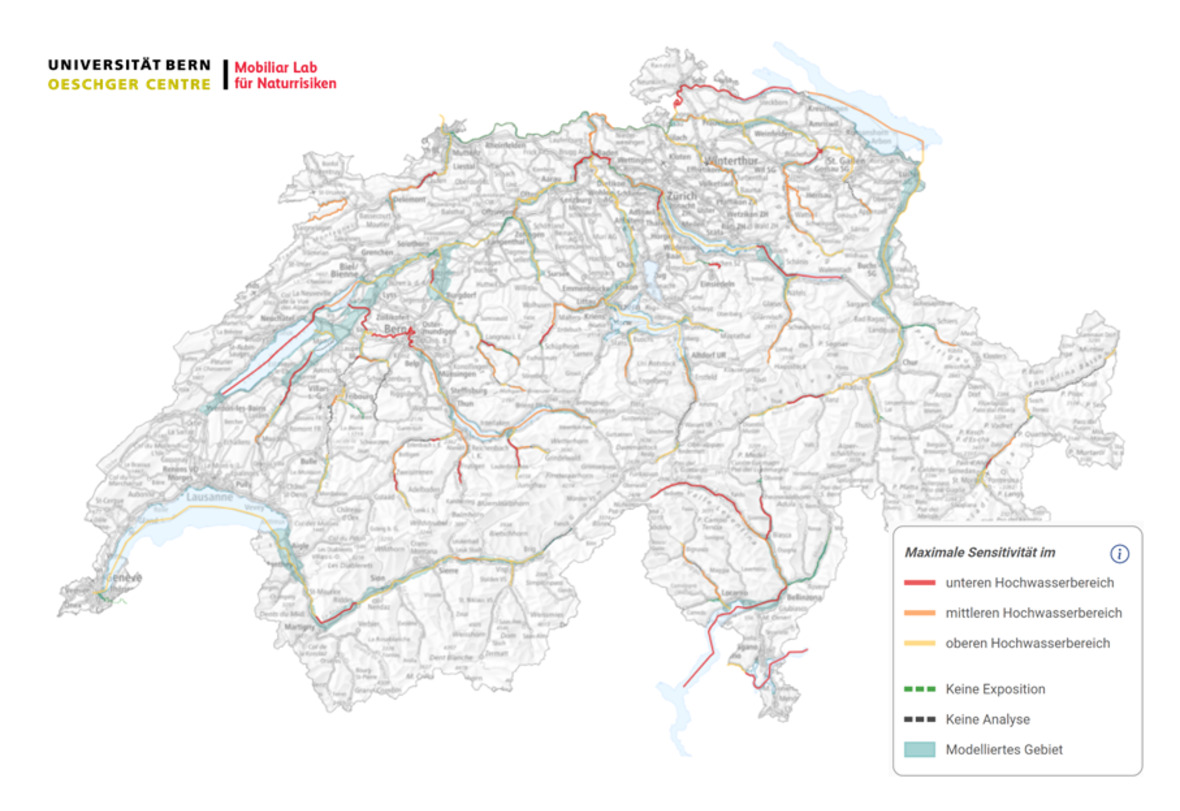
The University of Bern unveils a tool to assess flood risks
10 June 2024
 This new tool incorporates the effects of climate change into risk and damage assessments for the first time, laying the groundwork for future flood risk management.
This new tool incorporates the effects of climate change into risk and damage assessments for the first time, laying the groundwork for future flood risk management.
The University of Bern has introduced a new tool to help experts assess the impact of climate change on flood risks and potential damages in Switzerland.
Recent floods in Switzerland have caused only isolated damage, but future floods, exacerbated by climate change, could result in unprecedented destruction. This is the conclusion drawn by the Laboratoire Mobilière de recherche sur les risques naturels at the University of Bern. Utilizing a newly developed tool, the laboratory aims to aid specialists in flood prevention.
Climate change is evidently increasing the frequency of heavy rainfall, yet its precise impact on flooding remained unclear until now. The Laboratoire Mobilière can, for the first time, evaluate how climate change influences flood damage in Switzerland and identify the most vulnerable sections of waterways. This capability is made possible by their new online tool, which targets natural hazard specialists, population protection authorities, and other relevant agencies.
The tool, “Risk Sensitivity – Damaging floods in times of climate change,” provides insights into questions such as: how do damages evolve in a waterway segment when flow rates increase due to climate change? How many people or jobs are affected when water levels rise? What happens if maximum recorded flow rates are exceeded? “Quantitative information like this is crucial for effective prevention,” explains Andreas Zischg, co-director of the laboratory. “Such data is indispensable for taking preemptive measures to address weak points and optimize resource use.”
This scientific tool provides specific data on how floods will evolve as a consequence of climate change in Switzerland. Key findings include that even slight increases in peak flow rates can cause damages to surge dramatically. For instance, the study shows that with a 10% increase in flow rate, building damages rise by over 40%, and with a 20% increase, damages escalate by 80%.
Flood impacts vary significantly across different river and stream sections. Some areas are more sensitive to severe floods, with local damages potentially more than doubling. “This detailed analysis helps identify critical points along waterways, providing valuable information for population protection,” noted Markus Mosimann, the tool’s developer. Despite local variations, it is clear that Switzerland will face unprecedented flood levels due to climate change, adds Zischg: “Experts predict a 10-20% increase in flow rates due to climate change.”
A standardized methodology across the country
The “Risk Sensitivity – Damaging Floods Related to Climate Change” tool aims to improve flood risk management by allowing priorities to be set uniformly across Switzerland. “It is now possible to set priorities in flood risk management,” says Zischg, “based on a standardized methodology across the country.” The next step involves rapidly implementing protective measures on waterway sections deemed particularly threatened by the new tool.
Since 2018, the Laboratoire Mobilière has complemented traditional natural hazard research by focusing on the damage aspect of floods. Their efforts have produced seven practical tools available on www.risquedecrues.ch, designed to assist cantonal and communal authorities, other specialists, and the general public in recognizing flood risks to mitigate damage effectively. These tools also help size protection measures and prioritize them according to risk.

